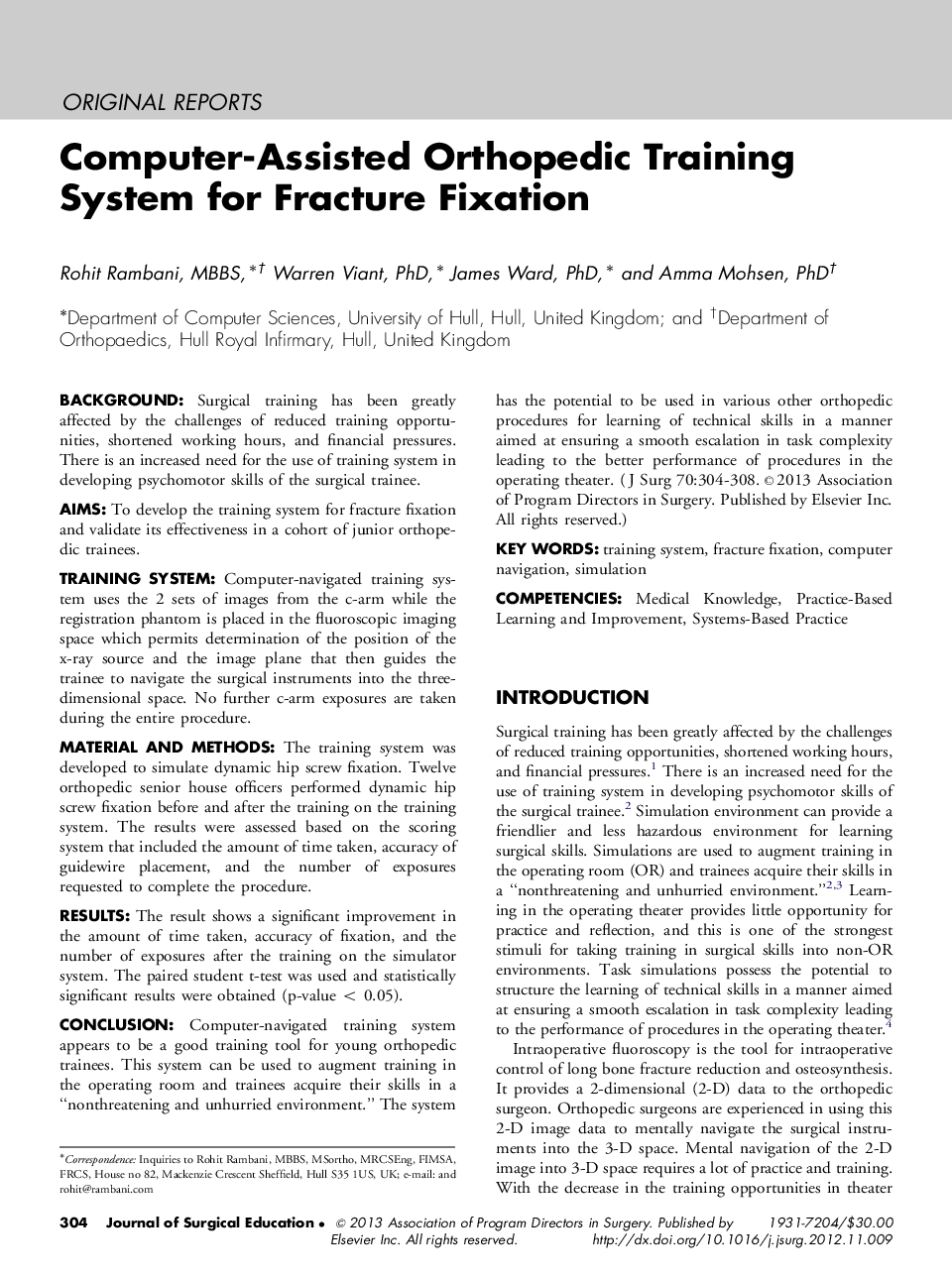| کد مقاله | کد نشریه | سال انتشار | مقاله انگلیسی | نسخه تمام متن |
|---|---|---|---|---|
| 4298042 | 1288339 | 2013 | 5 صفحه PDF | دانلود رایگان |

BackgroundSurgical training has been greatly affected by the challenges of reduced training opportunities, shortened working hours, and financial pressures. There is an increased need for the use of training system in developing psychomotor skills of the surgical trainee.AimsTo develop the training system for fracture fixation and validate its effectiveness in a cohort of junior orthopedic trainees.Training SystemComputer-navigated training system uses the 2 sets of images from the c-arm while the registration phantom is placed in the fluoroscopic imaging space which permits determination of the position of the x-ray source and the image plane that then guides the trainee to navigate the surgical instruments into the three-dimensional space. No further c-arm exposures are taken during the entire procedure.Material and MethodsThe training system was developed to simulate dynamic hip screw fixation. Twelve orthopedic senior house officers performed dynamic hip screw fixation before and after the training on the training system. The results were assessed based on the scoring system that included the amount of time taken, accuracy of guidewire placement, and the number of exposures requested to complete the procedure.ResultsThe result shows a significant improvement in the amount of time taken, accuracy of fixation, and the number of exposures after the training on the simulator system. The paired student t-test was used and statistically significant results were obtained (p-value< 0.05).ConclusionComputer-navigated training system appears to be a good training tool for young orthopedic trainees. This system can be used to augment training in the operating room and trainees acquire their skills in a “nonthreatening and unhurried environment.” The system has the potential to be used in various other orthopedic procedures for learning of technical skills in a manner aimed at ensuring a smooth escalation in task complexity leading to the better performance of procedures in the operating theater.
Journal: Journal of Surgical Education - Volume 70, Issue 3, May–June 2013, Pages 304–308